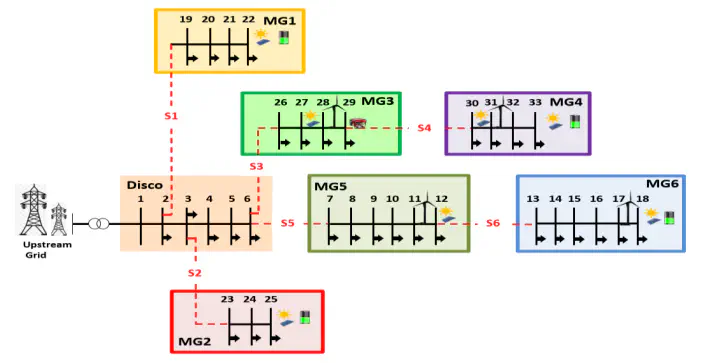摘要
The number of microgrids within a smart distribution grid can be raised in the future. Microgrid-based distribution network reconfiguration is analyzed in this research by taking demand response programs and power-sharing into account to optimize costs and reduce power losses. The suggested method determined the ideal distribution network configuration to fulfil the best scheduling goals. The ideal way of interconnecting switches between microgrids and the main grid was also identified. For each hour of operation, the ideal topology of microgrid-based distribution networks was determined using optimal power flow. The results were produced with and without the use of a demand response program and power-sharing in each microgrid. Different load profiles, such as residential, industrial, commercial, and academic, were taken into account and modified using appropriate demand response programs and power-sharing using the Artificial Bee Colony algorithm. Various scenarios were explored independently to suit the diverse aims considered by the distribution network operator for improved observation. The ABC optimization in this research attempted to reduce the system’s total operation costs and power losses through efficient networked microgrid reconfiguration. The results of optimal microgrid topology revealed the effects of power-sharing and demand response (TOU) programs. The results obtained in the proposed idea shows that costs were reduced by 8.3% and power losses were reduced by 4%. The IEEE 33-bus test system was used to demonstrate the effectiveness of the proposed approach.



